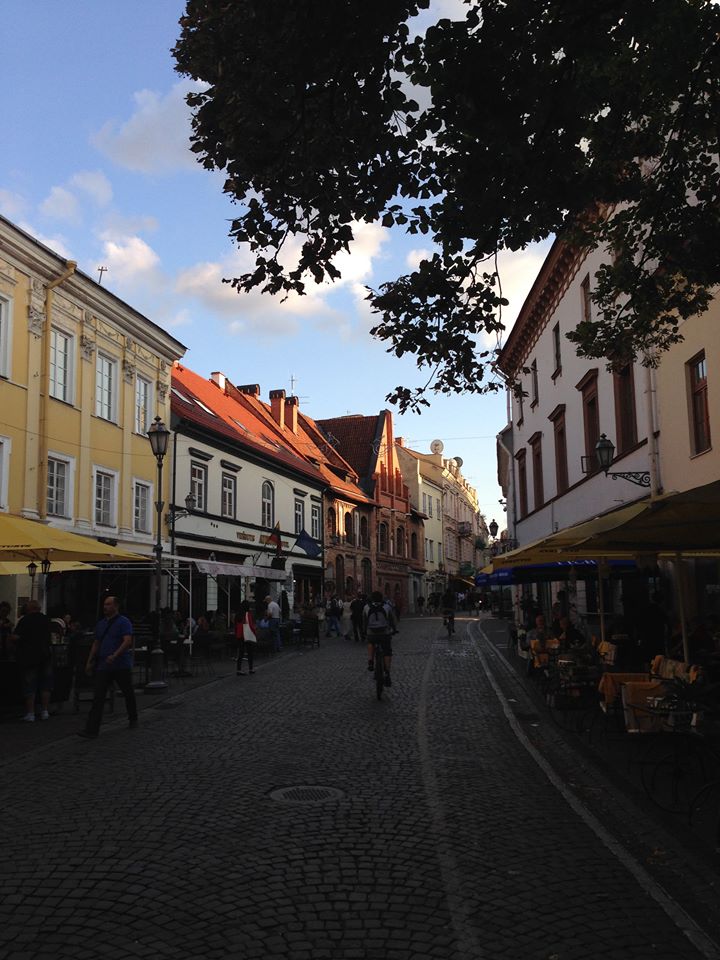I’m excited to go back to Vilnius – and here’s why
/Looking out on the financial district across the River Neris from Gediminas' Tower.
It was while returning from Krakow that I first came across Vilnius. When I was waiting for my Dad to pick me up from Liverpool John Lennon Airport, I wondered why there were so many men flooding the foyer holding flowers.
When I say ‘many’ I mean about four or five, but nevertheless it seemed unusual behaviour. They weren’t there to meet passengers from our flight, and soon the passengers from the flight after us began filtering through – a handful of which were greeted with a botanic surprise.
Intrigued, I naturally wanted to dig a little deeper. Surely these weren’t average tourists returning home, but more than likely wives and girlfriends who hadn’t seen their partners for some time.
The next course of action was a simple one – to see where their plane had arrived from. The answer was on the arrivals board and was a simple one – Vilnius.
I soon found out that Vilnius is Lithuania’s capital city, and my research also entailed a look on a map of Europe to see precisely where it was located.
Pilies Street is one of Vilnius' main streets, containing an abundance of cafés, restaurants and bars.
After the short trip to Krakow I was firmly onboard the travel hype train, and so my mind began to wander, make trails and plan trips.
My recent run-in with Vilnius saw me create a rough itinerary starting in that very city, then continuing on to its Baltic neighbours Riga in Latvia and Tallinn in Estonia. Throw in a dash of Helsinki, Finland and we were set for a northeastern-Europe adventure.
And that’s what we did. In August 2015 me and my girlfriend left Liverpool for Lithuania, and spent the next 10 days hopping from country to country, indulging on unforgettable experiences as we went.
Ahead of the trip, I was licking my lips at the prospect of Helsinki, most excited to visit my first Nordic country.
The destination I was least looking forward to was, funnily enough, Vilnius. Not because I didn’t want to go, but rather that it didn’t initially whet the appetite as much as Helsinki, Riga or Tallinn.
Vilnius Cathedral is one of the main sights in the Lithuanian capital as is sits at the end of both Pilies Street and Gediminas Avenue.
Yet as I look back at that trip over a year on, Vilnius was my favourite, and perhaps most surprising, part of the trip.
Just over a quarter of a century ago, things would have looked a lot different in that particular part of the world, with the country still under Soviet Rule.
One of the most poignant moments in Lithuania’s history was the January Events, which saw the Soviet military kill 14 people and injure 702 more in the fallout of their independence declaration the year before.
We learned about this at the Vilnius TV Tower, which was the main site in the massacre as forces tried to claim control over the landmark.
Nowadays it is a tourist attraction and Lithuania’s tallest structure is still occupied by the SC Lithuanian Radio and Television Centre. Visitors can learn more about the events of 13 January 1991 in small museum located in the tower’s lobby, while at the top the restaurant and observation deck offers 360-degree views across Vilnius and the surrounding county.
Linked to Lithuania’s fight for freedom, quite literally, is Gediminas’ Tower – also a symbol of the capital.
Gediminas' Tower rising above the Lithuanian National Museum.
It was from there began the Baltic Way, a peaceful political protest in which approximately two million people joined hands to form a human chain spanning almost 420 miles across the three Baltic states of Lithuania, Latvia and Estonia. This is explained in greater detail by an exhibition inside Gediminas’ Tower museum, which pays homage to the act itself.
The tower, which is on the Vilnius Castle Complex, is reachable via a winding cobbled footpath, though an ideal wait to reach the small summit is the funicular – which comes at a small cost, of course.
But, ultimately, when I think of Vilnius, I always have a flashback to eating Bolognese pizza and drinking the local Švyturys beer at one of the restaurants along the edge of Town Hall Square. It was there the sunset provided us with a mellowing blue sky, brought to life with streaks of orange tint and hot air balloons floating overhead.
A heart warming look at the sunset from Old Town Square, illuminating Vilnius' beauty.
It was like I was in a painting – only in real life. Surreal and abstract, yet quaint and homely. It was the moment I fell in love with the little Lithuanian city.
I guess I’m not the only one either, with the people at UNESCO enamoured with its beauty enough to list the Old Town as a World Heritage Site. Speaking from experience, it’s hard to argue with them.
A sculpture of an egg in the Jewish quarter of Old Town.
So this time when I head to Liverpool Airport, I’ll go forth with a different mindset and walk amongst the Vilnians on Pilies Street, reaping the rewards of a brilliant city.






















Vilnius - the capital of Lithuania - is one of my favourite city’s in Europea without being a spectacular destination. But just why do I think that?